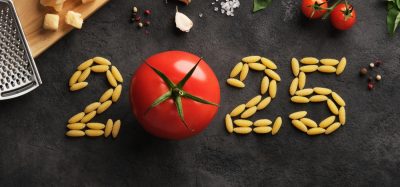Dietary reference values: Vitamin A advice published
- Like
- Digg
- Del
- Tumblr
- VKontakte
- Buffer
- Love This
- Odnoklassniki
- Meneame
- Blogger
- Amazon
- Yahoo Mail
- Gmail
- AOL
- Newsvine
- HackerNews
- Evernote
- MySpace
- Mail.ru
- Viadeo
- Line
- Comments
- Yummly
- SMS
- Viber
- Telegram
- Subscribe
- Skype
- Facebook Messenger
- Kakao
- LiveJournal
- Yammer
- Edgar
- Fintel
- Mix
- Instapaper
- Copy Link
Posted: 11 March 2015 | EFSA | No comments yet
EFSA has set population reference intakes for vitamin A as part of its review of scientific advice on nutrient intakes…


EFSA has set population reference intakes for vitamin A as part of its review of scientific advice on nutrient intakes. Draft proposals for vitamin E, phosphorus and vitamin B12 will be open for public consultation over the coming weeks.
The Panel on Dietetic Products, Nutrition and Allergies (NDA) set daily population reference intakes (PRIs) for vitamin A of:
- 750 μg for men and 650 μg for women.
- 250 to 750 μg for infants and children.
- 700 μg for pregnant women, which is higher than the adult PRI to allow for needs of the foetus and the growth of maternal tissues.
Analysis of data in EFSA’s Comprehensive Food Consumption Database and Nutrient Composition Database shows that in the EU average vitamin A intake ranges between 409–651 μg/day for children aged 1 to 3; 607–889 μg/day for children aged 3 to 10; 597–1,078 μg/day for adolescents (10 to 18 years); and 816–1,498 μg/day for adults.
Vitamin A is important for the maintenance of healthy vision, and the growth and integrity of cells in body tissues. The most specific clinical consequence of deficiency is xerophthalmia, an eye condition that typically affects young children. Vitamin A deficiency is also associated in some low-income countries with respiratory infection, diarrhoea and increased mortality.
Vitamin A is a fat soluble vitamin obtained from the diet either as preformed vitamin A (mainly retinol and retinyl esters) in foods of animal origin, or as provitamin A carotenoids in plant-derived foods. Foods rich in vitamin A include meat, butter, retinol-enriched margarine, dairy products, eggs, and vegetables and fruits such as sweet potatoes, carrots, pumpkins, dark green leafy vegetables, sweet red peppers, mangoes and melons.
The public consultations on dietary reference values for vitamin E, phosphorus and vitamin B12 will begin on 9-10 March. Details will be available here.









